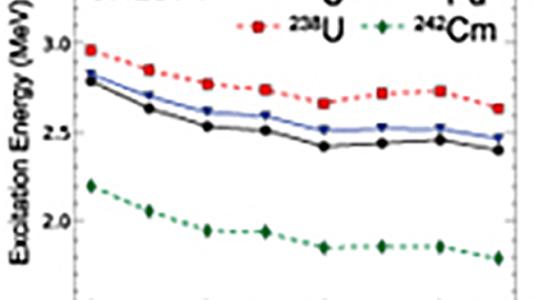
Accurately estimating the stability of a heavy nucleus against fission in its ground state is, however, a complex mathematical problem involving hundreds of strongly interacting protons and neutrons moving in a splitting nucleus.
Under the DOE-funded Universal Nuclear Energy Density Functional (UNEDF) SciDAC collaboration, researchers from Argonne’s Mathematics and Computer Science Division, together with physicists from the University of Tennessee, Oak Ridge and Lawrence Livermore national laboratories, Warsaw University, and Universität Erlangen, have been studying nuclear fission, based on nuclear density functional theory (DFT) and its extensions. The goal is to deliver fission models capable of providing nuclear data not only of a high quality but also with quantified uncertainties, and with a minimal number of runs. The research team successfully met this challenge using Argonne’s high-performance computational resources and the recently developed, derivative-free optimization algorithm POUNDERS.
M. Kortelainen, J. McDonnell, W. Nazarewicz, P.G. Reinhard, J. Sarich, N. Schunck, M.V. Stoitsov, and S.M. Wild, “Nuclear energy density optimization: Large deformations,” Physical Review C, 85 (2), pp. 024304, 2012.